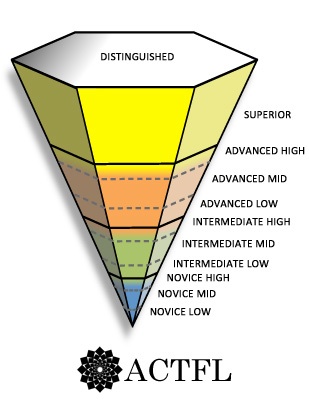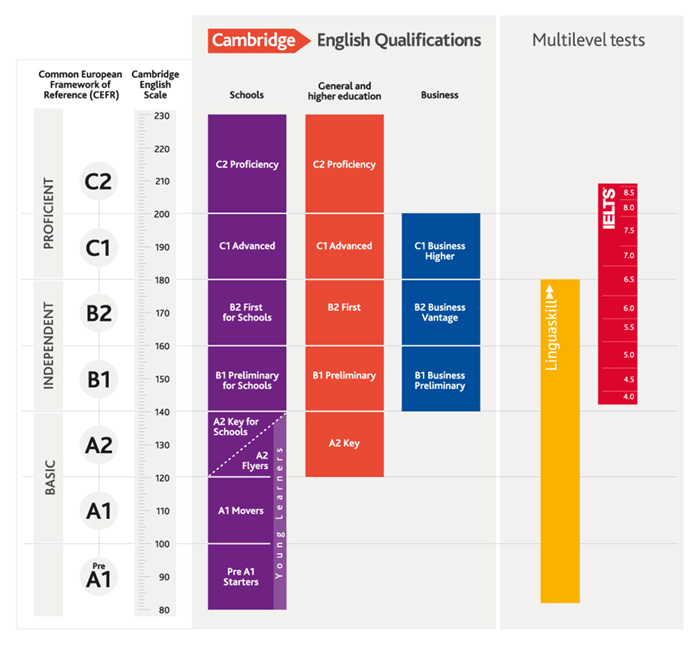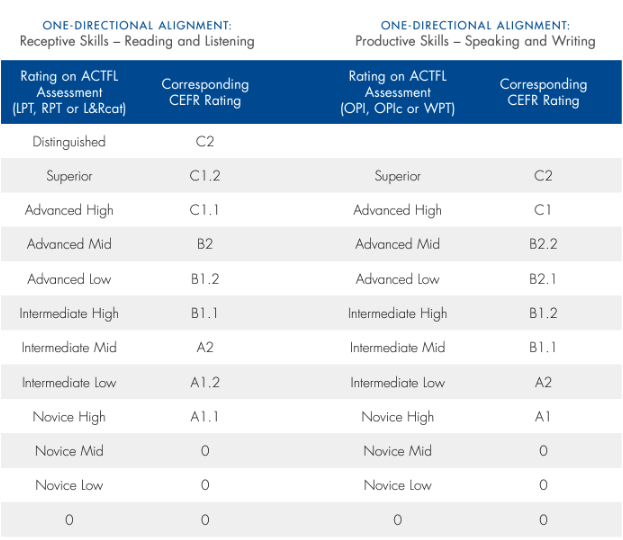The day will come when you need to assess your student’s language level, either to track their progress or prepare them for an exam. Or perhaps you need a method to assess whether the material you’ve sourced for a student is the right fit. Before making a commitment to a particular method, a wise investment of your time will be to learn what’s on offer. And additionally, in the case of an exam, what could a certificate do for you. Let’s get informed on two popular options by comparing ACTFL, the American standard, with CEFR, the European standard.
Who Are ACTFL and CEFR?
The American Council on the Teaching of Foreign Languages (ACTFL) is a membership organisation that offers one of the most popular exams in the USA today, providing proficiency guidelines and assessments on numerous languages. The grades gained through these assessments can be used in educational and governmental institutions as well as in the workforce.
The Common European Framework of References for Languages (CEFR) isn’t an organisation but a standardised way of assessing languages, popular in the EU. Many exams, such as the Cambridge English Exams, are aligned with the framework. They can be used as evidence of proficiency for universities, in the job market and in government institutions.
What Grades Can You Get?
The ACTFL scale offers five major levels for exam takers: novice, intermediate, advanced, superior and distinguished. All but superior and distinguished offer sublevels: low, mid and high. This allows teachers to perform precise language management at the lesson, unit and curriculum level in addition to assessment.

CEFR is a framework that organisations can use to create their own exams or assessments, which can be used for goalsetting in a similar way to ACTFL. The basic levels are A1 and A2, the independent levels are B1 and B2, and the proficient levels are C1 and C2. Cambridge Assessment offers its own scale alongside this, as can be seen in the following table:

Is It Possible to Compare CEFR and ACTFL Levels?
As CEFR and ACTFL are major frameworks for learning, teaching and assessment with rigorous standards and attention to detail, an effort to align the two systems has been made since 2010. The table below is a result of this effort:

Are There Any Similarities in How CEFR and ACTFL Are Marked?
Guidelines for marking students’ work are important for consistency across all exams, whatever the organisation. One tool CEFR and ACTFL have in common is the use of can/can-do statements. Boiled down to it’s simplest form, a can-do statement is a type of checkbox used for assessment.
An example of an illustrative can-do descriptor for a C1, CEFR-based exam might read: “Can understand a wide range of recorded and broadcast audio material, including some non-standard usage, and identify the finer points of detail, including implicit attitudes and relationships between speakers.” These statements are used across many categories in both frameworks.
How Is ACTFL Different from CEFR?
Like many exams, ACTFL tests a student across four skills: reading, writing, speaking and listening. The exam also assesses what it calls Modes of Communication:
- interpretive
- interpersonal
- and presentational
Interpretive communication refers to the student’s ability to interpret one-way communication, such as listening to a radio broadcast or reading a newspaper article. Interpersonal communication refers to the student’s ability to engage in two-way communication. For example, ordering food in a restaurant or co-creating a plan. Presentational refers to another type of one-way communication, such as a student’s ability to relay instructions.
Lastly, ACTFL differentiates proficiency and performance. The idea here is that sometimes language is performative and can be rehearsed to accomplish certain tasks, like applying for a job or getting a haircut. However, learners show their proficiency in situations where they are unfamiliar or need to improvise to overcome communication obstacles.
How Is CEFR Different from ACTFL?
CEFR believes looking at language assessment through the four skills model (in no particular order: reading, writing, speaking and listening) is old-fashioned. Instead, it uses the interaction of four other elements:
- reception
- interaction
- production
- mediation
Reception refers to the comprehension of written or spoken information, while production refers to—you guessed it!—the production of written and spoken information. The information could take the form of a podcast, radio show, advertisement, email, shopping list, brochure or another medium. And how is interaction defined?
"Interaction is not just the sum of reception and production—it is the process of weaving together discourse through a negotiation of meaning."
Council of Europe

Should I Choose ACTFL or CEFR?
ACTFL and CEFR assessments have many similarities and differences. So, which method should you use to assess your student’s language progress or the material you source for them? Which exam should your student take? Which is easier to use? There isn’t a perfect answer to any of those questions. Instead, check what your student’s goals are. If they want to take a language exam, it’s best to find out which exam they need. If the student plans on applying to a university, for example, we recommend checking the university’s entry requirements to see what is accepted as evidence of proficiency. Obviously, CEFR will be more popular in the EU than ACTFL, and vice versa for the USA.
Need to assess the language level of the homework or the laborously planned lesson you have created for your students? Hop into our language hub and save yourself countless, countless hours of preparation and planning.
Our readability, Catile, CEFR & Cambridge scale analyser tool is ready and waiting for your mouse click. What’s more, our level mapping converts to ACTFL in an instant. Assess and grade written material copy and pasted from the internet or taken from your classroom in a matter of minutes.
